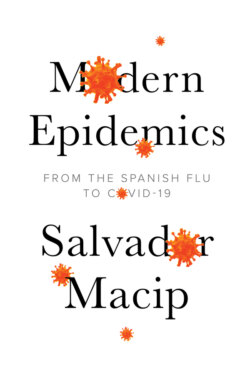Читать книгу Modern Epidemics - Salvador Macip - Страница 30
Delayed benefits
ОглавлениеIn the seventeenth century, the small town of Eyam, in the heart of England, was devastated by the Black Death. It’s believed that the disease came from London, in a flea-ridden bundle of cloth. When the townspeople realized what was happening, they closed themselves in their houses to avoid contagion, but it was too late. By the end of the epidemic, 259 of the town’s 350 inhabitants had died.
A few centuries later, Eyam found a way to benefit from this dark episode in its history, by organizing tours of the town and describing all the grisly details of how the plague nearly wiped it off the map.
There have been three significant epidemics of plague: the Justinian plague, that of the Middle Ages, which I’ve already mentioned, and one that broke out in Asia in the nineteenth century and has lasted through to the present day. But plague has almost certainly been with us for millennia. We can find descriptions of what sounds like the bubonic plague in the Bible and, specifically, in the First Book of Samuel, which speaks of the sickness that afflicted the Philistines because they’d captured the Ark of the Covenant. But when the thieves, terrified by what they believed was divine wrath, returned the Ark to its rightful owners, the plague also spread among the Jews, which goes to show that bacteria don’t understand religions.
The most serious plague epidemic was the one in the midfourteenth century that raged across all of Europe, Asia and North Africa. Known as the Black Death or the Pestilence, it killed 25 million people, or half the population of the affected continents. The epidemic began in Asia and spread throughout Europe in just three years. The practice of quarantine (isolating a person who’s suspected of being infected) dates precisely from this period. There were several outbreaks of Black Death in Europe until it was seen for the last time in the seventeenth century in the north of the continent, and in the eighteenth century in the south.
The bacterium responsible for plague wasn’t discovered until the nineteenth-century epidemic that hit China. In 1894, Alexandre Yersin and Shibasaburo Kitasato independently identified it in Hong Kong. The Swiss Yersin was having problems in studying the disease as he wasn’t permitted to examine the bodies of the victims, which were all being sent to Kitasato’s laboratory. At the time, the latter, an eminent microbiologist, especially well known for his work with Robert Koch on tuberculosis and tetanus, was the clear preference of the authorities. By contrast, Yersin received no support, but he wasn’t discouraged by that. He built a thatched hut, which became his laboratory, and started bribing morgue workers to give him access to the victims. Despite all the difficulties, Yersin ended up with the fame, partly because of errors in Kitasato’s work. Yersin decided to name the new microbe Pasteurella pestis in honour of Pasteur but, years after his death, the name was changed to Yersinia in recognition of his contribution.
As I’ve said, plague is far from being a thing of the past. For example, there was an outbreak in China in early August 2009. It was a pneumonic plague and, by the time it was made public, ten people were infected and two had died. The authorities immediately quarantined 10,000 people to stop the contagion from spreading.
